There are two main components to the Luchae medium, a light panel and a printed image.
Light Panels
The Luchae light panels differ from all other light panels in that the color temperature and the chromaticity of the LEDs is specifically designed for displaying photography and fine art in such a way that the images will have the truest depth of color.
An example of our light panels is shown below in which the front of the light panel emits and even illumination of light.
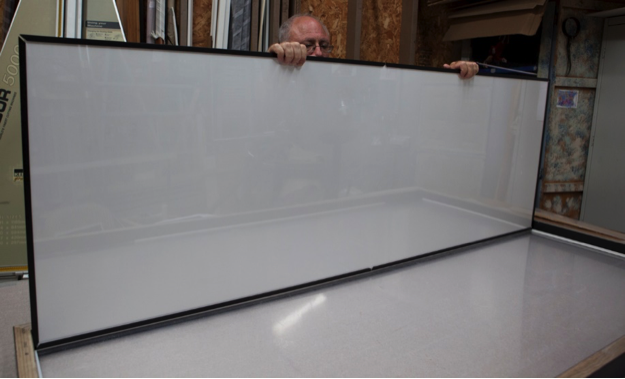
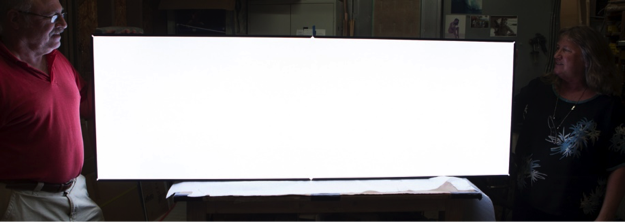
The back of each light panel consists of a dimmer control and one or more power supplies.
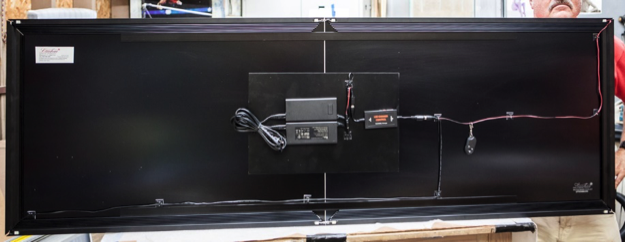

The dimmer controls and power supplies are built into the back of each light panel to create a very thin panel in which only the electrical plug exits from the back. The overall thickness of the light panel is about 5/8 of an inch.

Each light panel comes with a handheld radio frequency remote control that has the four functions of ON, OFF, BRIGHTER, and DIMMER. We have two styles of dimmer controls. The style shown below which is our traditional remote control shows both the dimmer control and the handheld remote control.
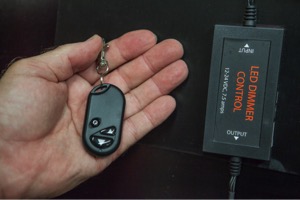
The light panels are designed to be easily inserted into picture frame moulding. The first step is to insert the image, which is usually printed onto 1/8 inch thick acrylic into the frame moulding. Then the light panel is inserted into the frame moulding as illustrated in the three following photographs.
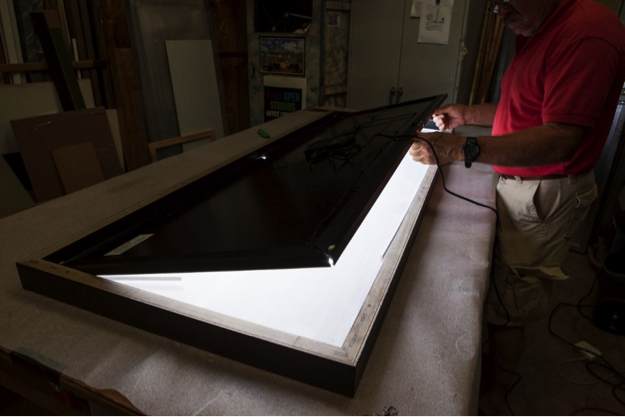
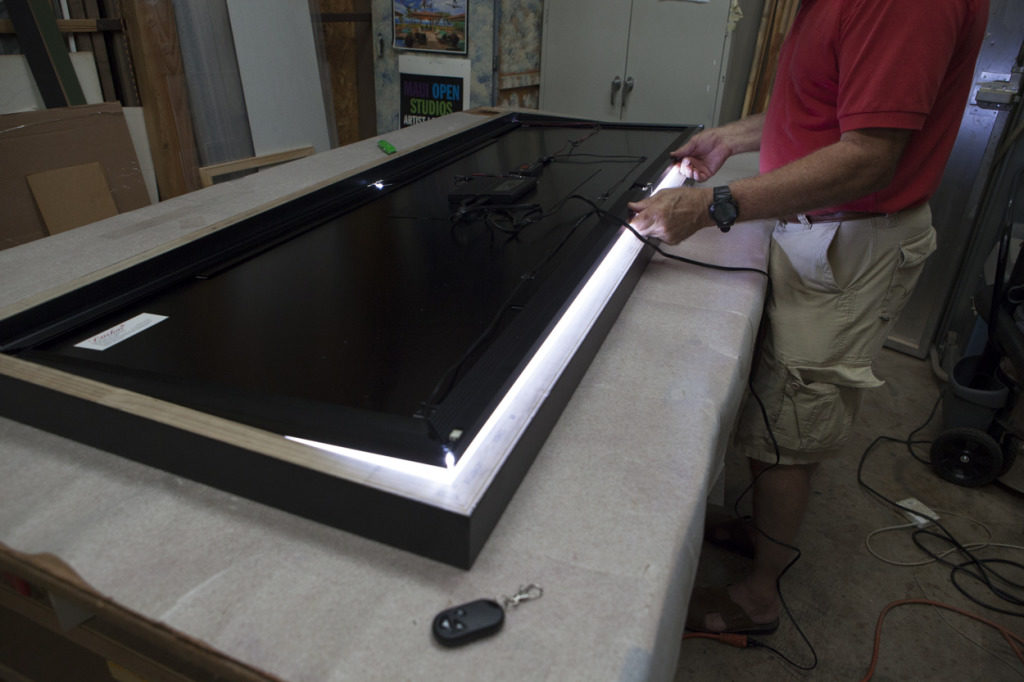
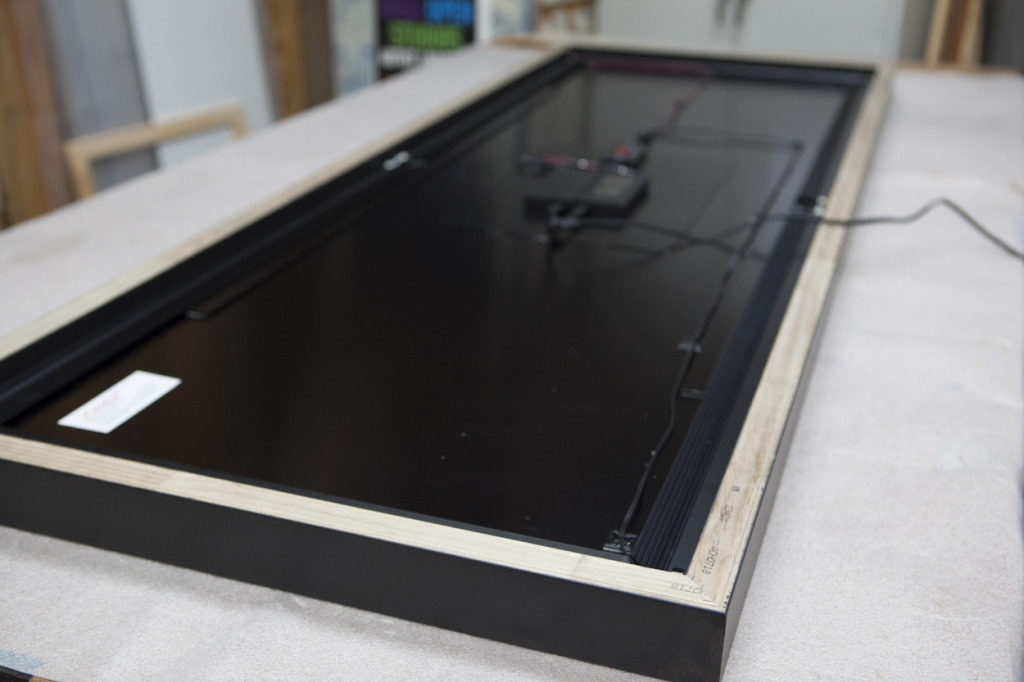
After the light panel has been inserted into the frame moulding it is a simple matter to secure the light panel to the moulding with a nail or staple gun. Offset clips can also be used to secure the light panel.


Printing
The printed image is the second main component to the Luchae medium. This consists of printing the image onto 1/8 inch thick clear acrylic through a process that is unique to Luchae.
Common Problems with Lighting
The most common problem with using illumination behind a printed image is that the image will look washed out from insufficient depth of ink. When it is known in advance that the image will be illuminated from behind then a backlit is made. A backlit is a printed image in which considerably more ink is added to prevent the image from being washed out when illuminated from behind. The problem with backlits is that the excessive ink makes the image look too dark when the image is illuminated from the front.
Why Luchae is Different
A Luchae is different from the two mediums just mentioned in that the Luchae always looks great regardless of whether it is illuminated from the front or back. This effect can be viewed by dragging the horizontal red slider bar in the image shown below either up or down.
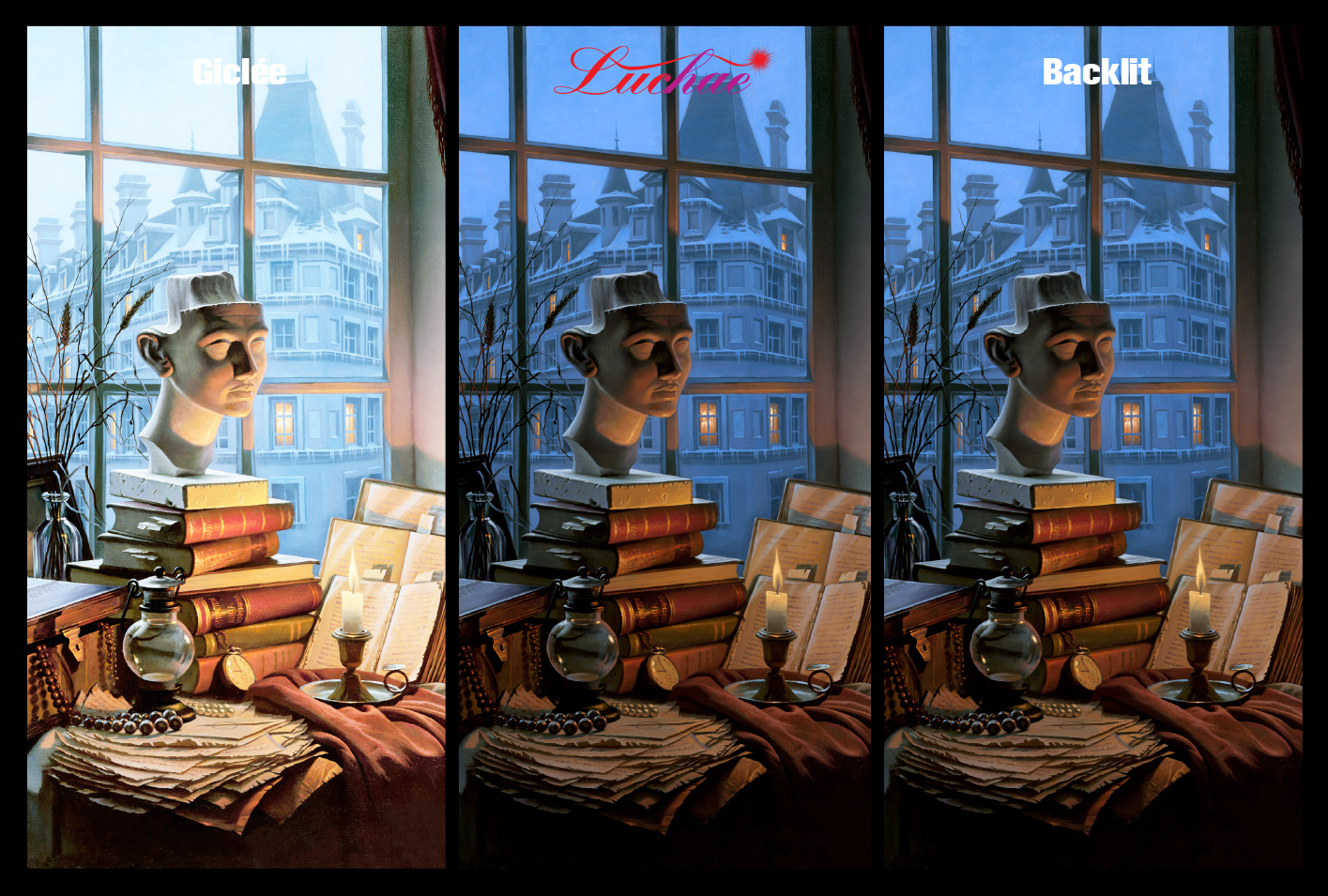
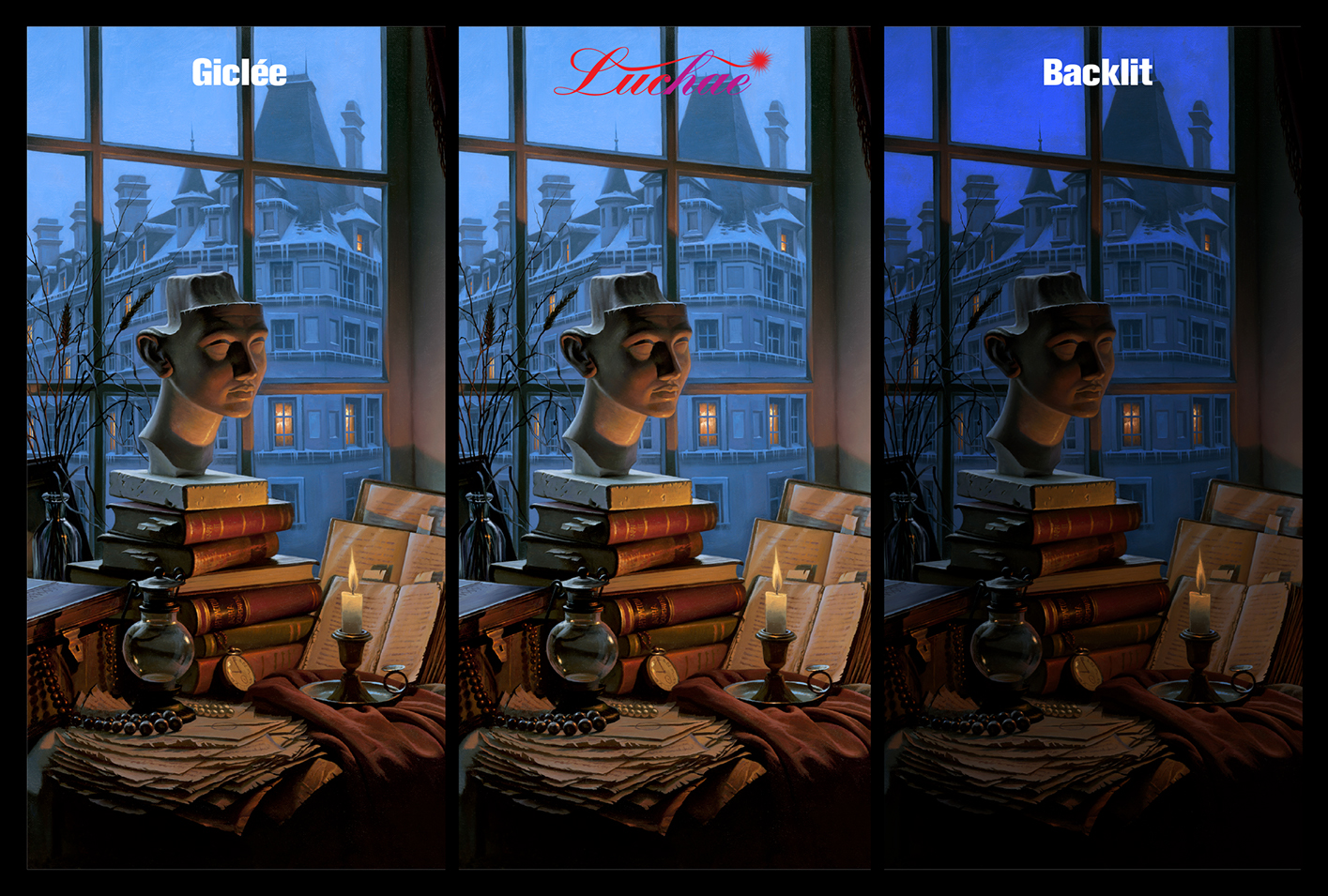
When you drag the red slider all the way to the top; you will see a reproduction of how these three images look when illuminated from the front. With front lighting, the giclée and the Luchae look identical. But the backlit on the far right looks too dark due to the extreme amount of ink that is used in a backlit.
When you drag the red slider all the way to the bottom; you will see a reproduction of how these three images look when illuminated from behind. There you can see that the Luchae and the backlit look attractive but the giclée is washed out. That’s because the giclée does not have enough ink to withstand illumination from behind.
As you drag the red slider you will see that the Luchae in the center always looks great regardless of being illuminated from the front or the back.
Luchae is the only art medium in the world that will look beautiful regardless of whether it is illuminated from the front or the back.
